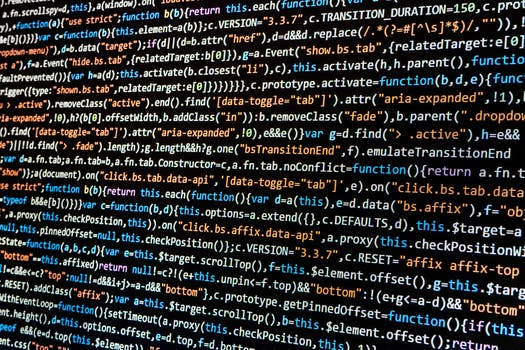TheDeveloperBlog.com
C-Sharp | Java | Python | Swift | GO | WPF | Ruby | Scala | F# | JavaScript | SQL | PHP | Angular | HTML
Python List Examples
Store elements in a dynamically-sized list. Append to, remove from and loop over lists.Step 1: We create an empty list. A list can start empty, but will expand to fit elements as we add them.
Step 2: We call append() 4 times. The 4 elements we add to the list are stored in that order.
Python program that uses append
# Step 1: create empty list.
list = []
# Step 2: append 4 numbers to the list.
list.append(1)
list.append(2)
list.append(6)
list.append(3)
print(list)
Output
[1, 2, 6, 3]
Important: The index 1 indicates the second element location. Lists are indexed starting at zero—they are zero-based.
Python program that calls insert
list = ["dot", "Codex"]
# Insert at index 1.
list.insert(1, "net")
print(list)
Output
['dot', 'net', 'Codex']
Caution: If we try to call append() to add a list, the entire new list will be added as a single element of the result list.
Tip: Another option is to use a for-loop, or use the range syntax to concatenate (extend) the list.
Python program that uses extend
# Two lists.
a = [1, 2, 3]
b = [4, 5, 6]
# Add all elements in list "b" to list "a."
a.extend(b)
# List "a" now contains six elements.
print(a)
Output
[1, 2, 3, 4, 5, 6]
Python program that uses len
animals = []
animals.append("cat")
animals.append("dog")
count = len(animals)
# Display the list and the length.
print(animals)
print(count)
Output
['cat', 'dog']
2
Python program that uses in
items = ["book", "computer", "keys", "mug"]
if "computer" in items:
print(1)
if "atlas" in items:
# This is not reached.
print(2)
else:
print(3)
if "marker" not in items:
print(4)
Output
1
3
4
And: With reverse, we invert the current order of the elements. Sort and reverse can be combined (for a reversed sort).
Python program that sorts and reverses
list = [400, 500, 100, 2000]
# Reversed.
list.reverse()
print(list)
# Sorted.
list.sort()
print(list)
# Sorted and reversed.
list.reverse()
print(list)
Output
[2000, 100, 500, 400]
[100, 400, 500, 2000]
[2000, 500, 400, 100]
Def: The example first uses a def method as the key argument to sort. The "key equals" part must be specified.
Lambda: We introduce an alternate syntax form, the lambda expression, for sorting elements in a last. This targets the second char.
LambdaPython program that sorts with def, lambda
def lastchar(s):
# Return last character in string.
return s[-1]
# Input.
values = ["abc", "bca", "cab"]
# Sort by last character in the strings.
values.sort(key=lastchar)
print(values)
# Sort by the second character in the strings.
# ... Use a lambda expression.
values.sort(key=lambda s: s[1])
print(values)
Output
['bca', 'cab', 'abc']
['cab', 'abc', 'bca']
Remove: This takes away the first matching element in the list. We can call it multiple times, and it could keep changing the list.
Del: This meanwhile removes elements by index, or a range of indices. Del uses the slice syntax.
DelPython program that removes elements
names = ["Tommy", "Bill", "Janet", "Bill", "Stacy"]
# Remove this value.
names.remove("Bill")
print(names)
# Delete all except first two elements.
del names[2:]
print(names)
# Delete all except last element.
del names[:1]
print(names)
Output
['Tommy', 'Janet', 'Bill', 'Stacy']
['Tommy', 'Janet']
['Janet']
Here: We encounter each of the four list elements in the for-loop. We use the identifier "element" in the loop body.
Python program that uses for, list
# An input list.
elements = ["spider", "moth", "butterfly", "lizard"]
# Use simple for-loop.
for element in elements:
print(element)
Output
spider
moth
butterfly
lizard
Tip: Starting at index 1 is key. In the loop body, we access the previous element, at index "i - 1", and the current element.
Python program that gets adjacent list elements
# Input list.
elements = [0, 10, 20, 30]
# Use range.
for i in range(1, len(elements)):
# Get two adjacent elements.
a = elements[i - 1]
b = elements[i]
# Print two elements.
print(a, b)
Output
0 10
10 20
20 30
Program: We apply the html method on each string in the input list. This calls capitalize() and returns an HTML fragment.
Identifier: In this list comprehension, each string is given the identifier "x." Html() is called on each element in the list.
Info: In list comprehension, we apply a method to each element. The syntax is short, making it easier to read.
List ComprehensionPython program that uses list comprehension
# Transform string into HTML.
def html(s):
return "<b>" + s.capitalize() + "</b>"
# Input string.
input = ["rabbit", "mouse", "gorilla", "giraffe"]
# List comprehension.
list = [html(x) for x in input]
# Result list.
print(list)
Output
['<b>Rabbit</b>', '<b>Mouse</b>', '<b>Gorilla</b>', '<b>Giraffe</b>']Result: The ending list has no trailing newlines at the end of the string elements.
Python program that uses readlines, list
list = []
f = open("C:\\programs\\file.txt", "r")
# Loop through all lines.
for line in f.readlines():
# Strip each line to remove trailing newline.
list.append(line.strip())
print(list)
Input file
Line 1.
Line 2.
Output
['Line 1.', 'Line 2.']Important: This program shows that the copied list (list2) has its own memory region. When we modify it, the original is not changed.
Resize: We can also resize a list. The slice syntax, and methods like append() are useful here.
Resize ListPython program that copies list
list1 = [100, 200, 300]
# Make a copy of list 1 and store it in list 2.
list2 = list1[:]
# Modify list 2.
list2[0] = -1
# The lists are separate.
print("LIST: ", list1)
print("COPIED LIST:", list2)
Output
LIST: [100, 200, 300]
COPIED LIST: [-1, 200, 300]Tip: The second argument of format() assigns an identifier to a list variable, and we can access elements within the string.
Python program that uses format, list
list = [10, 20, 30]
# Use "v" identifier to refer to the list.
# ... Access its elements in format.
res = str.format("The values are {v[0]}, {v[1]} and {v[2]}", v=list)
print(res)
Output
The values are 10, 20 and 30Python program that uses all
items = [False, None, True]
# Some elements evaluate to False, so all is False.
if not all(items):
print(False)
items = [10, 20, 30]
# All the items evaluate to True.
if all(items):
print(True)
Output
False
TrueFalse: Any() returns False if no elements are True. So "not any" is the same as "no True values."
Python program that uses any
elements = [False, None, "Pomegranate", 0]
# One value is True, so any returns True.
if any(elements):
print(True)
elements = [0, 0, False]
# Now no elements are True.
# ... Any returns False.
if not any(elements):
print(False)
Output
True
FalseTip: Lists of lists can be useful for small graphs and other applications that need a coordinate lookup, but not a huge memory space.
Warning: A 2D list is not efficient for larger areas. An array would be faster and use far less memory.
Related Links:
- Python global and nonlocal
- Python not: If Not True
- Python Convert Decimal Binary Octal and Hexadecimal
- Python Tkinter Scale
- Python Tkinter Scrollbar
- Python Tkinter Text
- Python History
- Python Number: random, float and divmod
- Python Tkinter Toplevel
- Python Tkinter Spinbox
- Python Tkinter PanedWindow
- Python Tkinter LabelFrame
- Python Tkinter MessageBox
- Python Website Blocker
- Python Console Programs: Input and Print
- Python Display Calendar
- Python Check Number Odd or Even
- Python readline Example: Read Next Line
- Python Anagram Find Method
- Python Any: Any Versus All, List Performance
- Python Filename With Date Example (date.today)
- Python Find String: index and count
- Python filter (Lambda Removes From List or Range)
- Python ASCII Value of Character
- Python Sum Example
- Python make simple Calculator
- Python Add Two Matrices
- Python Multiply Two Matrices
- Python SyntaxError (invalid syntax)
- Python Transpose Matrix
- Python Remove Punctuation from String
- Python Dictionary items() method with Examples
- Python Dictionary keys() method with Examples
- Python Textwrap Wrap Example
- Python Dictionary popitem() method with Examples
- Python Dictionary pop() method with Examples
- Python HTML: HTMLParser, Read Markup
- Python Tkinter Tutorial
- Python Array Examples
- Python ord, chr Built Ins
- Python Dictionary setdefault() method with Examples
- Python Dictionary update() method with Examples
- Python Dictionary values() method with Examples
- Python complex() function with Examples
- Python delattr() function with Examples
- Python dir() function with Examples
- Python divmod() function with Examples
- Python Loops
- Python for loop
- Python while loop
- Python enumerate() function with Examples
- Python break
- Python continue
- Python dict() function with Examples
- Python pass
- Python Strings
- Python Lists
- Python Tuples
- Python Sets
- Python Built-in Functions
- Python filter() function with Examples
- Python dict Keyword (Copy Dictionary)
- Python Dictionary Order Benchmark
- Python Dictionary String Key Performance
- Python 2D Array: Create 2D Array of Integers
- Python Divmod Examples, Modulo Operator
- bin() in Python | Python bin() Function with Examples
- Python Oops Concept
- Python Object Classes
- Python Constructors
- Python hash() function with Examples
- Python Pandas | Python Pandas Tutorial
- Python Class Examples: Init and Self
- Python help() function with Examples
- Python IndentationError (unexpected indent)
- Python Index and Count (Search List)
- Python min() function with Examples
- Python classmethod and staticmethod Use
- Python set() function with Examples
- Python hex() function with Examples
- Python id() function with Examples
- Python sorted() function with Examples
- Python next() function with Examples
- Python Compound Interest
- Python List insert() method with Examples
- Python Datetime Methods: Date, Timedelta
- Python setattr() function with Examples
- Python 2D List Examples
- Python Pandas Data operations
- Python Def Methods and Arguments (callable)
- Python slice() function with Examples
- Python Remove HTML Tags
- Python input() function with Examples
- Python enumerate (For Index, Element)
- Python Display the multiplication Table
- Python int() function with Examples
- Python Error: Try, Except and Raise
- Python isinstance() function with Examples
- Python oct() function with Examples
- Python startswith, endswith Examples
- Python List append() method with Examples
- Python NumPy Examples (array, random, arange)
- Python Replace Example
- Python List clear() method with Examples
- Python List copy() method with Examples
- Python Lower Dictionary: String Performance
- Python Lower and Upper: Capitalize String
- Python Dictionary Examples
- Python map Examples
- Python Len (String Length)
- Python Padding Examples: ljust, rjust
- Python Type: setattr and getattr Examples
- Python String List Examples
- Python String
- Python Remove Duplicates From List
- Python If Examples: Elif, Else
- Python Programs | Python Programming Examples
- Python List count() method with Examples
- Python List extend() method with Examples
- Python List index() method with Examples
- Python List pop() method with Examples
- Python Palindrome Method: Detect Words, Sentences
- Python Path: os.path Examples
- Python List remove() method with Examples
- Python List reverse() method with Examples
- Top 50+ Python Interview Questions (2021)
- Python List sort() method with Examples
- Python sort word in Alphabetic Order
- abs() in Python | Python abs() Function with Examples
- Python String | encode() method with Examples
- all() in Python | Python all() Function with Examples
- any() in Python | Python any() Function with Examples
- Python Built In Functions
- ascii() in Python | Python ascii() Function with Examples
- Python bytes, bytearray Examples (memoryview)
- bool() in Python | Python bool() Function with Examples
- bytearray() in Python | Python bytearray() Function with Examples
- Python Caesar Cipher
- bytes() in Python | Python bytes() Function with Examples
- Python Sum of Natural Numbers
- callable() in Python | Python callable() Function with Examples
- Python Set add() method with Examples
- Python Set discard() method with Examples
- Python Set pop() method with Examples
- Python math.floor, import math Examples
- Python Return Keyword (Return Multiple Values)
- Python while Loop Examples
- Python Math Examples
- Python Reverse String
- Python max, min Examples
- Python pass Statement
- Python Set remove() method with Examples
- Python Dictionary
- Python Functions
- Python String | capitalize() method with Examples
- Python String | casefold() method with Examples
- Python re.sub, subn Methods
- Python subprocess Examples: subprocess.run
- Python Tkinter Checkbutton
- Python Tkinter Entry
- Python String | center() method with Examples
- Python Substring Examples
- Python pow Example, Power Operator
- Python Lambda
- Python Files I/O
- Python Modules
- Python String | count() method with Examples
- Python String | endswith() method with Examples
- Python String | expandtabs() method with Examples
- Python Prime Number Method
- Python String | find() method with Examples
- Python String | format() method with Examples
- Python String | index() method with Examples
- Python String | isalnum() method with Examples
- Python String | isalpha() method with Examples
- Python String | isdecimal() method with Examples
- Python Pandas Sorting
- Python String | isdigit() method with Examples
- Python Convert Types
- Python String | isidentifier() method with Examples
- Python Pandas Add column to DataFrame columns
- Python String | islower() method with Examples
- Python Pandas Reading Files
- Python Right String Part
- Python IOError Fix, os.path.exists
- Python Punctuation and Whitespace (string.punctuation)
- Python isalnum: String Is Alphanumeric
- Python Pandas Series
- Python Pandas DataFrame
- Python Recursion Example
- Python ROT13 Method
- Python StringIO Examples and Benchmark
- Python Import Syntax Examples: Modules, NameError
- Python in Keyword
- Python iter Example: next
- Python Round Up and Down (Math Round)
- Python List Comprehension
- Python Collection Module
- Python Math Module
- Python OS Module
- Python Random Module
- Python Statistics Module
- Python String Equals: casefold
- Python Sys Module
- Top 10 Python IDEs | Python IDEs
- Python Arrays
- Python Magic Method
- Python Stack and Queue
- Python MySQL Environment Setup
- Python MySQL Database Connection
- Python MySQL Creating New Database
- Python MySQL Creating Tables
- Python Word Count Method (re.findall)
- Python String Literal: F, R Strings
- Python MySQL Update Operation
- Python MySQL Join Operation
- Python Armstrong Number
- Learn Python Tutorial
- Python Factorial Number using Recursion
- Python Features
- Python Comments
- Python if else
- Python Translate and Maketrans Examples
- Python Website Blocker | Building Python Script
- Python Itertools Module: Cycle and Repeat
- Python Operators
- Python Int Example
- Python join Example: Combine Strings From List
- Python Read CSV File
- Python Write CSV File
- Python Read Excel File
- Python Write Excel File
- Python json: Import JSON, load and dumps
- Python Lambda Expressions
- Python Print the Fibonacci sequence
- Python format Example (Format Literal)
- Python Namedtuple Example
- Python SciPy Tutorial
- Python Applications
- Python KeyError Fix: Use Dictionary get
- Python Resize List: Slice and Append
- Python String | translate() method with Examples
- Python Copy List (Slice Entire List)
- Python None: TypeError, NoneType Has No Length
- Python MySQL Performing Transactions
- Python String | isnumeric() method with Examples
- Python MongoDB Example
- Python String | isprintable() method with Examples
- Python Tkinter Canvas
- Python String | isspace() method with Examples
- Python Tkinter Frame
- Python Tkinter Label
- Python Tkinter Listbox
- Python String | istitle() method with Examples
- Python Website Blocker | Script Deployment on Linux
- Python Website Blocker | Script Deployment on Windows
- Python String | isupper() method with Examples
- Python String split() method with Examples
- Python Slice Examples: Start, Stop and Step
- Python String | join() method with Examples
- Python String | ljust() method with Examples
- Python Sort by File Size
- Python Arithmetic Operations
- Python String | lower() method with Examples
- Python Exception Handling | Python try except
- Python Date
- Python Regex | Regular Expression
- Python Sending Email using SMTP
- Python Command Line Arguments
- Python List Comprehension Examples
- Python Assert Keyword
- Python Set Examples
- Python Fibonacci Sequence
- Python Maze Pathfinding Example
- Python Memoize: Dictionary, functools.lru_cache
- Python Timeit, Repeat Examples
- Python Strip Examples
- Python asyncio Example: yield from asyncio.sleep
- Python String Between, Before and After Methods
- Python bool Use (Returns True or False)
- Python Counter Example
- Python frozenset: Immutable Sets
- Python Generator Examples: Yield, Expressions
- Python CSV: csv.reader and Sniffer
- Python globals, locals, vars and dir
- Python abs: Absolute Value
- Python gzip: Compression Examples
- Python Function Display Calendar
- Python Display Fibonacci Sequence Recursion
- Python String | lstrip() method with Examples
- Python del Operator (Remove at Index or Key)
- Python String | partition() method with Examples
- Python String | replace() method with Examples
- Python Zip Examples: Zip Objects
- Python String | rfind() method with Examples
- Python String | rindex() method with Examples
- Python String rjust() method with Examples
- Python String rpartition() method with Examples
- Python String rsplit() method with Examples
- Python Area Of Triangle
- Python Quadratic Equation
- Python swap two Variables
- Python Generate Random Number
- Python Convert Kilometers to Miles
- Python Convert Celsius to Fahrenheit
- Python Check Number Positive Negative or Zero
- Python Check Leap Year
- Python Check Prime Number
- Top 40 Python Pandas Interview Questions (2021)
- Python Check Armstrong Number
- Python SQLite Example
- Python Tkinter Button
- Python Find LCM
- Python Find HCF
- Python Tuple Examples
- Python String | rstrip() method with Examples
- Python String splitlines() method with Examples
- Python String | startswith() method with Examples
- Python String | swapcase() method with Examples
- Python Truncate String
- Python String | upper() method with Examples
- Python for: Loop Over String Characters
- Python String | zfill() method with Examples
- Python Sort Examples: Sorted List, Dictionary
- Python XML: Expat, StartElementHandler
- Python Urllib Usage: Urlopen, UrlParse
- Python File Handling (with open, write)
- Python Example
- Python variables
- Python Random Numbers: randint, random.choice
- Python assert, O Option
- Python Data Types
- Python keywords
- Python literals
- Python MySQL Insert Operation
- Python MySQL Read Operation
- Python ascii Example
- Python ASCII Table Generator: chr
- Python Range: For Loop, Create List From Range
- Python re.match Performance
- Python re.match, search Examples
- Python Tkinter Menubutton
- Python Tkinter Menu
- Python Tkinter Message
- Python Tkinter Radiobutton
- Python List Examples
- Python Split String Examples